- Articles
- Cherries
- Minutiae
- Q&A
- RAINN
- Releases
- Reviews
- Site News
- Them
- Toriphiles
- Touring
- TV/Radio/Web
- Video
News Archives
Keep an eye on our Twitter and Facebook pages since we often post quickie updates there when we're on-the-go.
During tours, we do our best to cover setlists in real-time on Twitter. If you want to tweet a show in, just DM or @ us on the day and tell us to watch your stream that night.
Tori is touring in 2017 to support the release of Native Invader. The European legs runs from early September through early October and the North American leg runs from late October to early December. We do not know if additional dates elsewhere will be added.
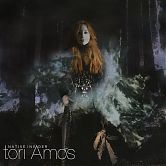
Native Invader (album, 2017)

Unrepentant Geraldines (album, 2014)

Gold Dust (album, 2012)

Night of Hunters (album, 2011)

Midwinter Graces (album, 2009)
 Abnormally Attracted To Sin (album, 2009)
Abnormally Attracted To Sin (album, 2009)
Live at Montreux 1991/1992 (DVD, 2008)
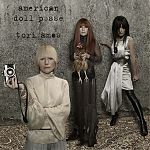
American Doll Posse (album, 2007)
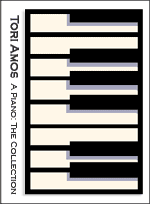
A Piano (boxed set, 2006)
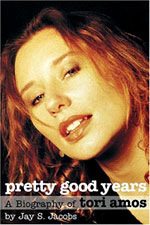
Pretty Good Years
(bio, 2006)

Fade To Red
(DVD, 2006)
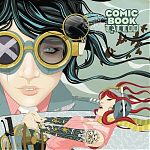 Comic Book Tattoo (book, 2008)
Comic Book Tattoo (book, 2008)News: Little Earthquakes: Track-by-Track
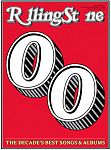 The track-by-track retrospective of Little Earthquakes that was noticed in the table of contents of the latest Rolling Stone has now been posted. In this online exclsive, Tori writes about each song, providing her perspective on each song from this pivotal release.
The track-by-track retrospective of Little Earthquakes that was noticed in the table of contents of the latest Rolling Stone has now been posted. In this online exclsive, Tori writes about each song, providing her perspective on each song from this pivotal release.
Thanks to Mark-Alexis for being the first to let us know!
Tori Amos’ Track-by-Track Guide to “Little Earthquakes”
The singer-songwriter on the rejection and self-discovery that fueled her influential 1992 debut
ROBERT MARIL
Posted Dec 18, 2009 3:55 PM
Tori Amos’ first seasonal album Midwinter Graces, with its placid arrangements and guest vocals by her nine-year-old daughter, sounds light years removed from her first solo release, 1992’s Little Earthquakes. Amos’ beautifully edgy debut was filled with confessional, piano-driven exploring the complexities of finding one’s voice and throwing off the shackles of religion that helped set the stage for the explosion of women songwriters in the 1990s.
Little Earthquakes’s genre-defining success didn’t come easy. After the spectacular failure of her first major-label release, a leather-and-metal project called Y Kant Tori Read, Amos was defeated. “I had to put the pieces back together, because I hadn’t been used to being a failure,” she says. “I had come from child prodigy to ‘vapid bimbo,’ and I had to look at my part in the misrepresentation of my soul and how I pulled the trigger.”
Discoveries Amos made about this self-adulteration led to much of the thematic material on Little Earthquakes, which was vibrant, self-aware and sometimes searingly difficult. Loooking back at the album, track by track for Rolling Stone, Amos recalls, “Coming out of beating myself up about the choices I had made, I just rolled up my sleeves and grasped at all of the poetry that had ever meant anything to me,” Amos says. “From Rambeau to Beaudelaire, e.e. cummings, Emily Dickenson, and also the visual artists. I surrounded myself with the stories and the thinkers that formed me, not what those that had the power to push the button wanted me to be formed with.”
“Crucify”
I was living in L.A. when I wrote that. Times were changing. I had just recently come out of the Y Kant Tori Read experience, which catapulted me — drove me — to begin making this music. Unknowingly, I just had to write. Because I wasn’t used to failure. I’d been a child prodigy. From child prodigy to “vapid bimbo,” I think, was one of the quotes — it was a galaxy apart. Signs were happening around me. Across town, somebody called Tracy Chapman was in the studio recording her first record. There was another gal that was coming out at that time called Melissa Etheridge.
Those two other women were being supported to be true to their art. I kind of got put in a category. There were categories of more artistic, more commercial, and in my mind, [commercial] wasn’t a dirty word. Because at the time, there were all kinds of artists that I liked that were doing it. When Y Kant Tori Read was decimated, the image wasn’t a good choice. I learned a lot by not really picking the photographer myself, not working with a proper stylist who understood what you were trying to do and can help you show that. I had to put the pieces back together, because I hadn’t been used to being a failure. So I had to then look at my part in the misrepresentation of my soul, and how I pulled the trigger.
“Girl”
It’s not an aggressive fight. It’s an internal fight, that when you need other people’s approval, when you walk in a room, you’re everybody’s — or anybody’s — girl. When you don’t need that anymore, [it’s] because you have an understanding and an agreement with yourself on who you want to be. And when I say “who you want to be,” that’s going to evolve. But at least you’ve got to get your palette, your paint, your canvas, and say, “I’m not choosing to tell this story, which is doing anything to have success.” I don’t want that kind of success.
[“Girl’] was being clear with myself that I didn’t want that. Didn’t need that. Because what I was achieving really hadn’t been done in that way, because folk women were being embraced. There was a style for them. But straddling the piano and making the piano a viable instrument with songs being built around it, that was gone since the Carole King days. This was a very different thing because this wasn’t the blues/R&B approach. And Kate Bush was much more electronica. And so, I knew then, that I had a big fight ahead of me. And that I couldn?t be anybody’s; I had to be my own.
“Silent All These Years”
I think when you’re attacked for something that you’ve been doing since before you could talk — and again, we’re talking about deep respect, its misrepresentation, and you think, “Oh geez, I don’t want to become a Mrs. Representation.” And you’re in your twenties, saying, “I’m only in my twenties and it’s over.” And I think, “By the time you’re 25, they will say you’ve gone and blown it.” [Lyrics from “Curtain Call,” from Abnormally Attracted to Sin] It comes from that period of time.
So I was with my niece Cody, who was a little girl at the time, and she’s very much a part of “Silent All These Years,” because she loved fairytales and stories, and we would share the Little Mermaid story — Hans Christian Andersen and the idea that she’d lost her voice — and watching Cody respond to this young woman giving up her essence and power, all for something else, and in that moment, I realized that when she had no voice, that just completely took me to the place where I needed to go to reclaim it.
“Precious Things”
I got brought to my knees yet again. We were on a trip, Eric Rosse and I, and what had just happened was that Little Earthquakes, the original 10 or 12 songs, had been — let’s use this word loosely — rejected. That was the Davitt Sigerson production. Now, a lot of those songs made the record in the very beginning, but when it was turned in, I just don’t think it was presented correctly and I don’t think they knew what I was doing. So, once Doug Morris got involved and realized what it was, then we had a conversation. I’ll never forget it. In Los Angeles. And he said to me, “I think you need to write and record another track.” I said, “No. I’ll do four. I can’t do one because there’s too much pressure for that one to be it.” And so he agreed. And he agreed that I could pull the team in, and he let me be at home, producing.
I pulled in Eric Rosse as a co-producer because we had made the demos together and we worked well together. We’re sort of like spiritual brother and sister. Although we were together at the time, we’re both married with children now. We were very much alike in that we’re both keyboard players. After that conversation with Doug, which I thought was actually good news because I embraced it saying, “Look, if they don’t think it’s ready, then it’s not ready for whatever reason,” we took a trip through the America West. We did Utah into the whole Colorado range. Then we came back down and made our way back. And it was in the Rocky Mountains that I came up with this riff.
I wasn’t near a piano when it came up. It started building in my head. I think I had been forming it before we left because sometimes that happens. I’ll have a two-word phrase or something like that. But everything came together when I got really ill in the Rockies. Just a fever, came down with something. And I think layers were coming off my life — shields that I had built up in order to filter things. And as that started to get ripped away, these core parts of the self were getting discovered. I was seeing what my structure was made of.
“Winter”
[The “White Horses” are ] your dreams. That doesn’t really say it. Opportunities? Roads that you thought you would go down and haven’t experienced, and all these potential experiences are gone now. Those doors are closed. And imagination — the belief that your imagination can take you to places. The magical world having gone from your world, which to me there’s nothing more painful than that — when you can’t access your magical world. There was a moment when I thought I was too young to not be able to access that anymore. But I’ve noticed over the years that a lot of teenagers feel locked out of that world. They don’t know how to get back anymore because in trying to become an adult you feel like you have to circumcise the magical world.
“Happy Phantom”
I worked with John Philip Shenale on this, who did all the string arrangements for Midwinter Graces, so this is one of those collaborations that has stood the test of time and I met him on this record. To talk about death was really important on Little Earthquakes because there was a part of me had to die. The image that I had created for whatever reason, had to die.
“China”
Love song. There’s been a side to me that’s always been drawn to heart-wrenching love songs. And sometimes I find that you don’t get those necessarily just in the contemporary singer-songwriter world, but also with musical theater, Gershwin, classics. I think that “China” probably came after a big bout of listening to Barbra Streisand. Because you know, if anyone can break your heart, she could.
“Leather”
Little did I know that ladies that work in the other entertainment industry would listen and dance to it around their poles. And people stop me all the time. Even very recently I was getting wine not far from here, and somebody said, “I teach pole dancing classes to your music,” and “Leather” was one of those songs. So I think there was a side to me that was trying to — in the shedding — to also really collect my shadow portions. And I would go visit them and take these sides that I had judged. And one side that had been very crucified was the sexual side that did not yet understand erotic spirituality, did not know how to bring this into being. Very far away — years away from this. Little did she know when she was writing “Leather” that we would be years and years away from knowing how to integrate that.
“Mother”
I knew that “Winter” needed to be written, which represented not just the father, but the grandfather — Papa, my mother’s father. So the positive male energies in my life, and also moments with men, with their disappointment in themselves and how that plays out. I wanted — I needed — the polar opposite, so I felt like this needed to go beyond the human mother. This needed to go back to ideas of Creatrix and that God is not just male, but of the Creator being female and male. So this is the feminine story coming down to earth, leaving this soul space and saying goodbye to Mother Creator as I go to Mother Earth. And the last thing is somebody leaves the light on.
“Tear In Your Hand”
Written back in Maryland, Rockville. [It’s] bittersweet, I think, always going back, when you’re that age for the holidays because you’re not so far away from leaving your parents’ house to have your own life, separate from all those people you went to high school with. So I think “Tear In Your Hand” is very much about feelings I had for certain people and lots of nostalgia coming up at that time.
“Me and a Gun”
Difficult work. Raw. I had seen Thelma & Louise and after seeing it I went off and spent some time by myself. Days. Days. And days. Processing so much that I hadn’t been able to begin to become conscious about. And it was through gut-wrenching pain — hysteria, I think — that the music began to come. In the quiet, in the silence, being alone. I couldn’t speak to or be with anybody so I just went off to one of my secret private haunts that you go in the world You just leave everything you know and go. And that’s what I did.
And when I came back out again, this song was walking hand in hand with me. It became something I had to sing to move forward. I had to claim it and be the necklaces of somebody I came to work with a few years later. She ran the Cedars-Sinai ward; her name was Dr. Rita Lynn. I worked with her for many, many years because after this song came out, I then began to retreat and put up all those shields again because I couldn’t deal with the invasion of all the questioning. It became a whole other process [in which] people were getting off on that. Nothing was enough, so I needed to retreat. By retreating, I began to take a few steps back in my process.
So I began to work with her after Under the Pink, when things just got to a place where I needed to do that. And she would say, “We have to bead a necklace of truth.” And sometimes we have to bead little bits at a time so we can assimilate. And that’s kind of key, because in singing the song, it was the thing that kept me breathing and conscious.
“Little Earthquakes”
Coming out of a lot of miscommunication with friends and family and extensions of all that, where I think in everybody’s life, sometimes, you don’t know how you got there. You don’t know how the meltdown happened within a group of people; lots of finger-pointing and I couldn’t cope. And it wasn’t my family this time.
These days, sometimes friends are family, and it was a group of us, and I needed to pull back. And re-look at my life and who was in my life, and the kinds of people that I wanted in my life, and the kind of person I could be in a relationship where I wasn’t able to maybe be what someone needed me to be, so I needed to be with somebody else who I could give what they needed. This was a real turning point in claiming what kind of life I wanted to live. It was a real beginning.


